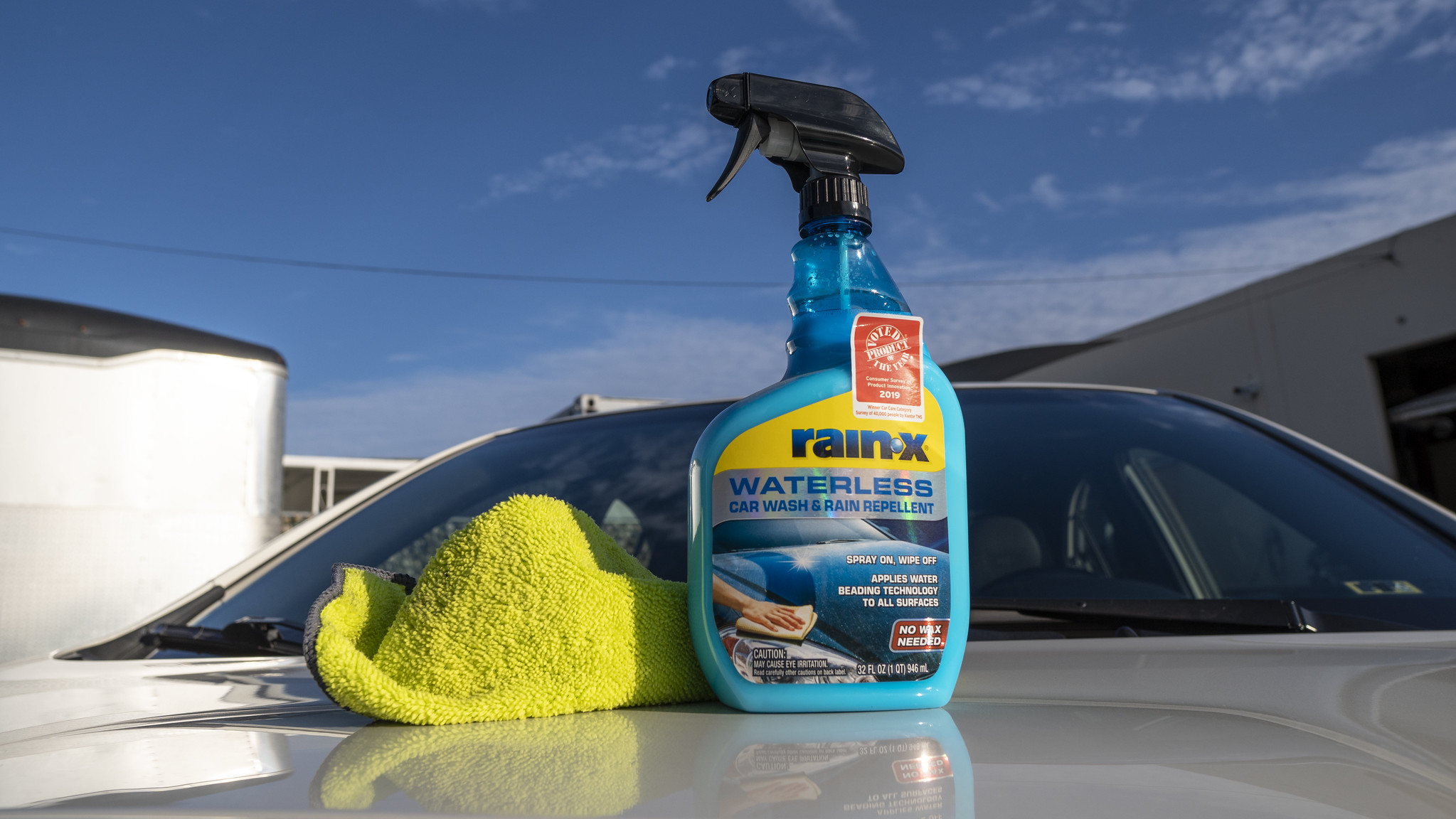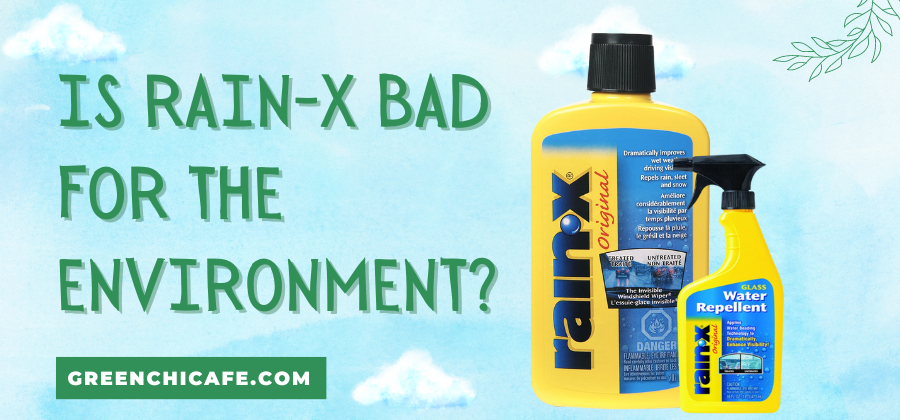Rain-X helps provide clearer visibility in wet conditions but contains concerning chemicals.
While not definitively classified as highly dangerous, proper precautions during use and disposal help minimize ecological risks.
As a product designed for outdoor vehicle application, examining Rain-X’s environmental impact is important for making informed sustainability choices.
Is Rain-X Bad for the Environment?

Rain-X is not definitively classified as highly environmentally dangerous but contains potentially concerning solvents and polymers requiring cautious use and disposal.
While small amounts washed from windshields present minimal risk, proper handling prevents contamination of waterways in higher concentrations.
Key Points
- Rain-X relies on silicone polymers and hydrocarbon solvents in its formula.
- Aquatic toxicity is possible if significant amounts entered storm drains.
- Proper precautions during use and recycling of unused products prevent harm.
What is Rain-X Made Of?
Rain-X features a silicone-based formula that causes water to bead up and roll off the glass.
Specific ingredients include solvents like isopropanol to cut through oils for application and potentially ethyl silicates to bond to the glass surface.
Additional silicone polymers like phenyl triethoxysilane create hydrophobic protective coatings.
The solvents evaporate quickly, leaving the active polymers to repel rain.
More research is needed on proprietary chemical compositions.
Could Rain-X Be Toxic if Swallowed?
Yes, ingesting Rain-X could pose moderate toxicity risks if swallowed, especially in children.
The product contains hydrocarbon solvents and polymers requiring cautious handling.
MSDS safety sheets list possible effects including gastrointestinal irritation, nausea, and vomiting if large amounts are ingested.
However, incidental contact during proper exterior vehicle use presents a negligible risk.
Still, hand washing after application is advisable.
How Does Rain-X Affect the Environment After Use?
During application, volatile solvents in Rain-X evaporate into the air potentially contributing to smog formation.
The remaining residue washes off windshields with rain and flows into watersheds and oceans.
Minimal research exists assessing the ecological impacts of these discharge volumes.
But aquatic toxicity is a concern for some ingredients.
Washing vehicles responsibly and limiting runoff safeguards ecosystems, especially the aquatic environment.
Could Rain-X Cause Damage if it Entered Storm Drains?
Yes, notable ecological damage is possible if significant volumes of Rain-X entered storm drains flowing into sensitive aquatic habitats.
The solvents and polymers pose toxicity risks to fish and other wildlife.
However, the small amounts washed from individual car windshields present little concern.
The bigger threat remains the improper disposal of unused products which could potentially contaminate groundwater if spilled in higher concentrations.
Does Rain-X Help Prevent Frost and Ice Buildup?
No, Rain-X is not formulated to melt ice or prevent frost and ice formation on windshields in winter weather.
The water-repelling silicone polymers only facilitate rain runoff through lowered surface tension.
Applying Rain-X to frosted or iced-over windows will not provide a meaningful improvement in icy conditions.
Defrosters and physical ice removal are still required for winter driving visibility.
Could Rain-X Cause Windshield Cracks or Damage?

No, when applied properly according to directions, Rain-X does not cause cracks or damage to the automotive glass.
The polymer solution bonds safely to existing windshield glass through a mild chemical reaction.
In fact, the hydrophobic coating helps minimize pits and abrasions by enabling improved water beading and runoff.
However, pre-existing windshield damage should be repaired before application to prevent leaks or drips.
Overall, Rain-X protects glass integrity.
Should You Use Rain Repellent?
Using a rain repellent like Rain-X can provide helpful water beading and visibility benefits for drivers.
However, responsibility requires weighing advantages against potential environmental risks.
The moderate use of efficient windshield application utilizes the minimal product.
But improper disposal of leftover repellent could pollute ecosystems.
Responsible recycling prevents contamination.
While the silicone polymers pose aquatic toxicity, small amounts washed from windows present little concern. But care should be taken near storm drains.
Overall, the need for rain repellent depends on individual factors like climate and driving exposure to downpours.
Using sparingly, disposing of properly, and seeking more eco-friendly options when possible allows enjoying benefits while protecting the planet
Key Takeaways:
- Using Rain-X as directed poses minimal risk, but environmental considerations warrant proper handling and disposal.
- Additional data would be helpful for understanding ecological impacts.
- As with any chemical automotive product, following precautions during use and recycling unused Rain-X appropriately helps sustain nature while driving safely.
FAQ
How Should You Dispose of Leftover Rain-X?
Unused Rain-X should be recycled responsibly as hazardous automotive waste to avoid environmental contamination. Contact local waste authorities for guidance on proper disposal locations. Never pour leftovers down indoor or outdoor drains.
Is it Safe to Use Rain-X on Plastic Windshields?
Yes, when applied correctly Rain-X bonds safely to plastic and polycarbonate windshields without damaging or weakening the material. It may last slightly shorter on plastic than glass but provides the same water-beading effect.
Does Rain-X Degrade Car Wax?
Rain-X will not degrade or remove existing car wax. In fact, applying Rain-X over a freshly waxed windshield helps it bond properly and may prolong the water-beading effect. The silicone polymers safely coat the wax layer.
At GreenChiCafe, we are passionate about protecting the natural world and sharing knowledge that cultivates more sustainable lifestyles.
Please check out our website for more content about caring for our planet and living eco-consciously.
